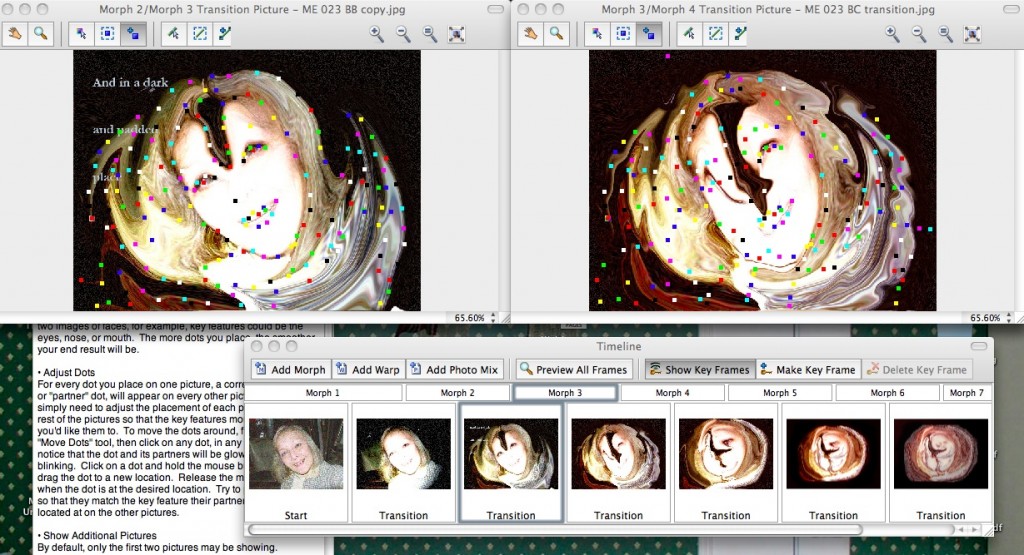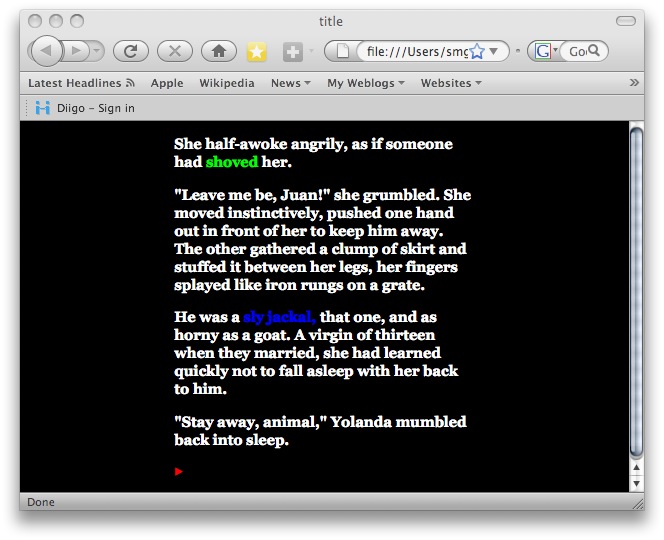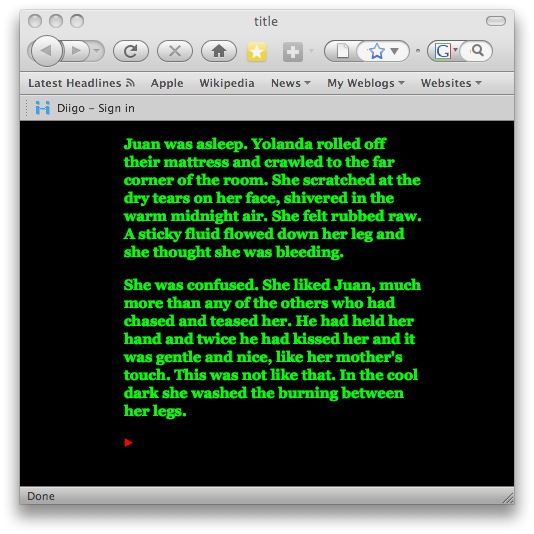Well it looks like what I’ve brought out of the Hypertext 2008 conference is a long to-do list:
1. Continue the Storyspace short story I started somewhere between Pittsburgh and Philly and a couple miles up in the sky.
2. Continue Juan Gutierrez’s Extreme Conditions in Literatronica and move into Mark Marino’s A Show of Hands.
3. Review and post here on Alan Baldwin’s flash work at Webyarns.
4. Return to Storytron and download the newest version of Chris Crawford’s character building program and play around with that to form an idea of how it serves the writer and the interactivity of the program.
5. Follow and learn from Steve Ersinghaus’ 100 Poems to prepare for imagery and brevity in all work.
6. Learn Inform and produce an IF piece before the Tunxis Fall semester. (John–you’ll likely be getting some e-mail pleas for help from me, okay?)
7. Start thinking about an Eastern Hypertext and New Media get-together for next year (!)
8. Consider Dene Griger’s human hypertext form as it may apply to layers, or 3D hypertext event in text form–back to the CAD programs?
9. Rewatch and review Charles Deemer’s Changing Keys hyperdrama and note its significance to the expansion of the written hypertext form.
10. Focus on the marketing of the hypertext literary experience over and above yakking it up to all I encounter (I’m noticing some avoidance on the part of my friends). I envision a street corner in downtown Hartford–or more likely some sprawling corporate park where I pretend to play a harmonica as a hook to draw them closer.
11. Re #10 above: the more important ‘marketing’ may be not to the readers, but to the writers. The readers will come if there’s great and diverse story available.
12. Figure how I can forward the hypertext environment in new ways by genre or combination of text and audio and graphics to produce something new and exciting in story.
13. Learn Tinderbox really, really fast to organize all the above.
(Note: 13’s always been a lucky number for me!)




 The Lost Children: A Charity Anthology
The Lost Children: A Charity Anthology